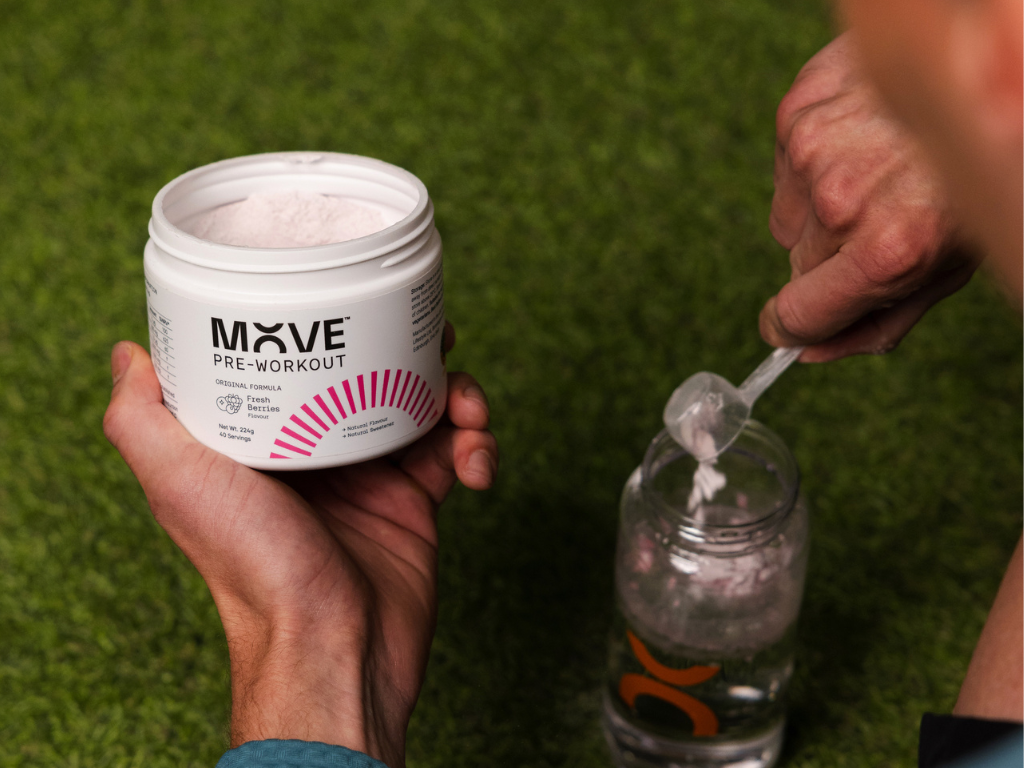
If you’ve ever felt that burst of energy before a big lift, you know caffeine is the go-to pre-workout ingredient.
But here’s the thing: most athletes don’t fully understand why it works or how to use it right. Too much can leave you jittery, too little won’t do much.
In this article, we’re breaking down exactly how caffeine fuels your training, why it’s not just a quick hit, and how to dial in the perfect dose.
If you’re serious about taking your performance to the next level, you’ll want to know what’s happening behind that cup of coffee.
Let’s break down how it actually works so you can program caffeine with intent, not guesswork.
Caffeine 101: How It Fires You Up
- Blocks “I’m-tired” signals. Caffeine parks on adenosine receptors, delaying the feeling of fatigue.
- Boosts neural drive. More motor-unit recruitment means harder, cleaner muscle contractions.
- Kicks up adrenaline. A controlled rise in epinephrine sharpens focus and perceived energy.
- Widens the vascular highway. Indirect nitric-oxide bumps improve blood flow and oxygen delivery.
Result: effort feels easier, so training volume climbs without adding extra minutes to the clock.
Caffeine vs. Pre-Workout
Ever wondered how pre-workouts differ from coffee-based products? Watch the video below as performance expert Tom Coughlin breaks down the science behind caffeine, consistency, and what makes MOVE Pre-Workout more reliable than your morning brew.
What the Science Says (Cliff-Notes Version)
|
Performance Lever |
Effective Dose |
Proof In Practice |
|
Energy & Alertness |
~3-6 mg/kg body-weight |
Consistently improves time-to-exhaustion and power output. |
|
Muscular Strength |
~3-5 mg/kg |
Umbrella meta-analysis shows small but reliable strength gains |
|
Endurance |
~3-6 mg/kg |
Enhances pace holding in events ≥40 min |
|
Cognitive Focus |
~1-3 mg/kg |
Heightens vigilance and reaction speed, valuable for skill lifts |
Coach’s note: “More isn’t better after ~6 mg/kg. Above that, side-effects grow while benefits flat-line.” — Tom Coughlin, Performance Nutrition Expert
Timing It Right
- 30–45 min pre-session—peak blood levels land when you hit your first working set.
- Mind the half-life (2–12 h). Evening lifters: aim for the low end of the dose range or choose caffeine-free.
- Hydrate. Caffeine’s mild diuretic effect is negligible if you’re sipping water between sets.
Personal Factors You Can’t Ignore
- Genetics & Metabolism: Fast vs. slow caffeine metabolisers feel drastically different highs and crashes.
- Habitual Intake: Daily coffee crowd? No worries, you still get the performance perks. You might not feel it as intensely, but your output still climbs.
- Body-weight: Dose by kilos, not by scoop size. One size never fits all.
Common Pitfalls & How to Dodge Them
|
Pitfall |
Fix |
|
Sleepless nights |
Cut caffeine intake ≥6 h before bed; drop to ≤3 mg/kg for late sessions |
|
Jitters / Anxiety |
Start at half-serving, pair with carbs to blunt stimulation. |
|
Energy Crash |
Avoid mega-doses (≥9 mg/kg) and proprietary blends hiding stimulant cocktails. |
How MOVE Gets It Right
- 228 mg natural caffeine – roughly ~3 mg/kg for a 75kg athlete.
- Paired with L-Tyrosine and L-Arginine to smooth focus and blood-flow, not spike it.
- Transparent label, no artificial colours, zero proprietary “mystery” doses.
Translation: smooth climb, steady plateau, no nose-dive later.
Action Plan
- Calculate: Body-weight (kg) × 3 mg = starting dose.
- Test: Take 30-45 min before a key workout; log energy, focus, and sleep quality.
- Tweak: Adjust ±25 mg per session until performance climbs without lifestyle fallout.
- Cycle: One low-stim week every 6–8 weeks to keep sensitivity high.
Ready to Dial in Precision?
Grab a MOVE Sachet, mix with 200-500 ml water,
and feel the clean, focused energy power your next lift, without the crash. Then sleep like you earned it.


